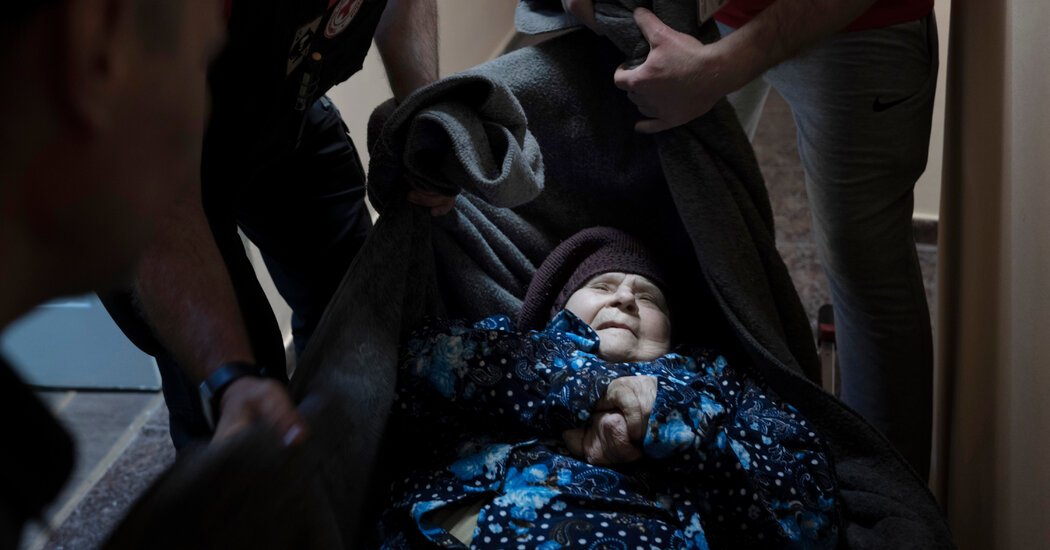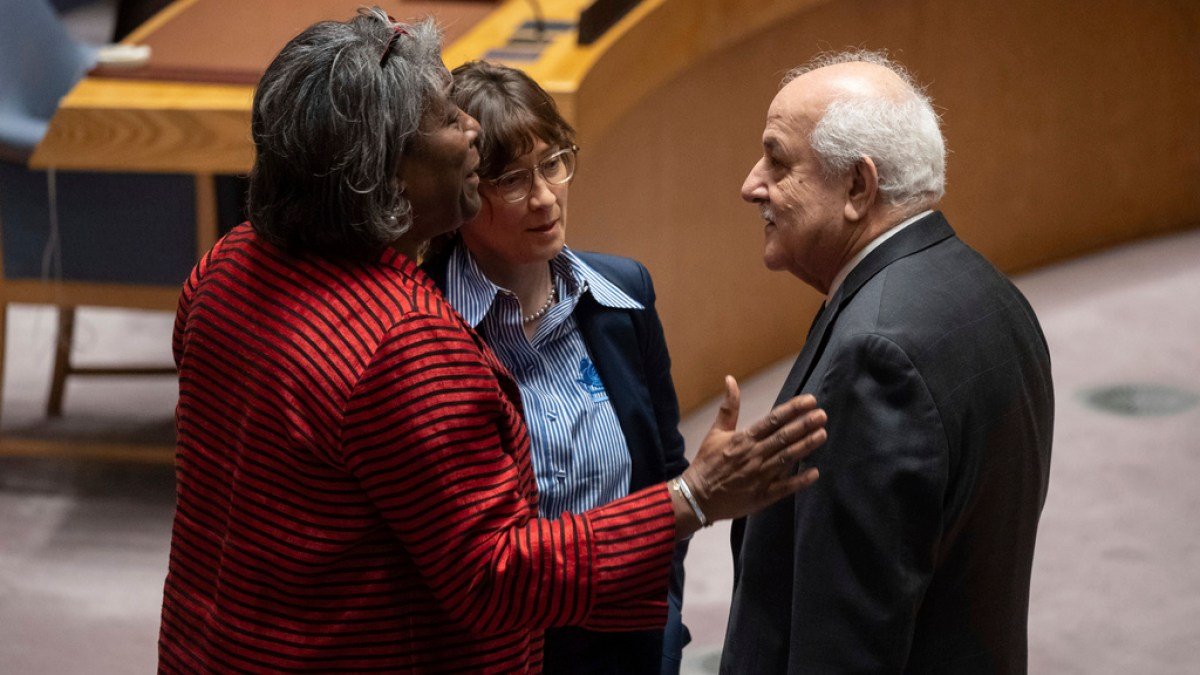WASHINGTON — A day after U.S. officials said Ukraine could use American weapons in limited strikes inside Russia, a deepfake video of a U.S. spokesperson discussing the policy appeared online.
The fabricated video, which is drawn from actual footage, shows State Department spokesperson Matthew Miller seeming to suggest that the Russian city of Belgorod, just 25 miles north of Ukraine’s border with Russia, was a legitimate target for such strikes.
The 49-second video clip, which has an authentic feel despite telltale clues of manipulation, illustrates the growing threat of disinformation and especially so-called deepfake videos powered by artificial intelligence.
U.S. officials said they had no information about the origins of the video. But they are particularly concerned about how Russia might employ such techniques to manipulate opinion around the war in Ukraine or even U.S. political discourse.

Belgorod “has essentially no civilians remaining,” the video purports to show Miller saying at the State Department in response to a reporter’s question, which was also manufactured. “It’s practically full of military targets at this point, and we are seeing the same thing starting in the regions around there.”
“Russia needs to get the message that this is unacceptable,” Miller adds in the video, which has been circulating on Telegram channels followed by residents of Belgorod widely enough to draw responses from Russian government officials.
The claim in the video about Belgorod is completely false. While it has been the target of some Ukrainian attacks, and its schools operate online, its 340,000 residents have not been evacuated.
The false assertions that civilians have fled and that the city is mainly a military zone might imply a Western willingness to support indiscriminate strikes there, which is not the case.
President Joe Biden has given Ukraine what officials call limited permission to use U.S. weapons for self-defensive strikes inside Russia. The shift in policy came in response to Russia’s positioning just inside its border of missiles, glide bombs and artillery shells that it is using to attack the Ukrainian city of Kharkiv and its surrounding areas.
The video also shows Miller seeming to respond to a reporter’s contention — also manipulated — that other countries are “allowing their weapons to strike deep within Russian territory,” which is not accurate, although some Western leaders have said their weapons can be used to hit border targets in Russia that are threatening Ukraine.
“So we’re going to back our allies in whatever they decide to do, and maybe help some of the folks who are on the fence about this make the right choice,” Miller is made to say.
Miller, who was traveling with Secretary of State Antony Blinken this week in Moldova and the Czech Republic, denounced the video in a statement.
“The Kremlin has made spreading disinformation a core strategy for misleading people both inside Russia and beyond its borders,” he said. “It’s hard to think of a more convincing sign your decisions aren’t working out than having to resort to outright fakes to defend them to your own people, not to mention the rest of the world.”
Several Russian media outlets and websites referred to or disseminated the video, with no mention that the lip sync was off — or that Miller’s shirt and tie changed color midway.
As it happens, combating Russian disinformation was a central theme of Blinken’s latest trip. In Moldova and the Czech Republic, he spoke publicly of such assaults in European nations engineered by pro-Russia propagandists. In many cases, the actors spread lies using networks on social media platforms, including through fake accounts.
At a meeting Friday in Prague, Blinken and his counterparts from other members of NATO discussed how to blunt Russian disinformation and other types of “hybrid attacks” aimed at eroding governance and democratic systems in the United States and European allied nations.
“I can tell you that in the meeting today, virtually every ally was seized with this intensification of Russia’s hybrid attacks,” Blinken said at a news conference Friday afternoon. “We know what they’re up to, and we’ll respond both individually and collectively as necessary.”
At the first stop on the trip, in Chisinau, Moldova, U.S. officials and their counterparts discussed the online propaganda aimed at undermining the president, Maia Sandu, who has been pushing for Moldova to enter the European Union and is up for reelection in October.
On Thursday, Blinken and Jan Lipavsky, the foreign minister of the Czech Republic, signed a memorandum of understanding in Prague to counter “foreign state information manipulation,” the State Department said.
Joining the trip was James Rubin, who had Miller’s job in the Clinton administration and is now a special envoy dealing with disinformation and coordinator for the State Department’s Global Engagement Center.
Miller’s phony remarks were repeated verbatim on the Telegram channel of Russia’s Human Rights Council, a state body that nominally advises President Vladimir Putin. The council’s account then shared the angry response of its chair, Valery Fadeyev.
“Washington deliberately does not want to notice Kyiv’s obvious crimes against humanity,” Fadeyev wrote. “I don’t particularly expect that this information will be conveyed to the cynic from the State Department, but the truth is ours in any case.”
Fadeyev, in his post condemning Miller’s “lies,” suggested that the United States did not understand that civilians were at risk in Belgorod. He said that at least 175 civilians had been killed in the Belgorod region and another 800 injured since February 2022.
Russia’s state news agency TASS ran an article Thursday based on Fadeyev’s comments. As of Friday night, the Human Rights Council had not issued a statement on its Telegram channel acknowledging that the video was fake.
The Insider, an independent Russian outlet with a section dedicated to rooting out fake news, noted that the video was also available on the Russian social network VK, which is now controlled by businesspeople close to Putin, and other websites run by pro-war propagandist Alexander Kots.
Life in Belgorod is far from normal: Schools operate online only, and air raid sirens wail regularly. Explosions are regularly heard, with buildings damaged and civilians killed. A spate of explosions on Dec. 30, 2023, that Russia blamed on Ukraine killed 25 people and injured at least 100. The explosions came one day after Russian airstrikes in cities across Ukraine killed 57 and wounded 160.
Some regions near the border have been evacuated, and many smaller towns and villages within range of the border are regularly subject to drone and artillery attacks from Ukraine. In late April, Belgorod’s regional governor, Vyacheslav Gladkov, said that at least 120 civilians, including 11 children, had died as a result of Ukrainian strikes. He said that another 651 people had been injured since Russia launched its full-scale invasion of Ukraine in February 2022.










